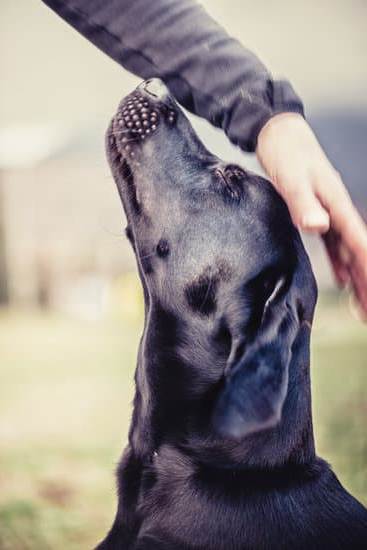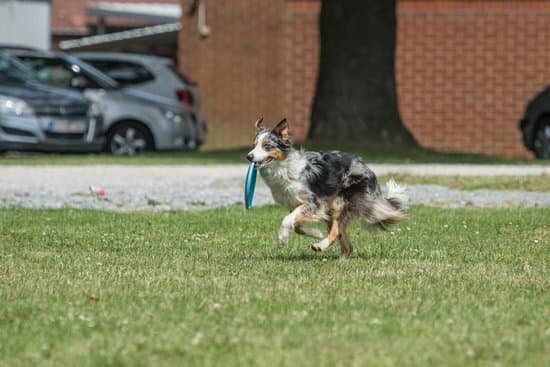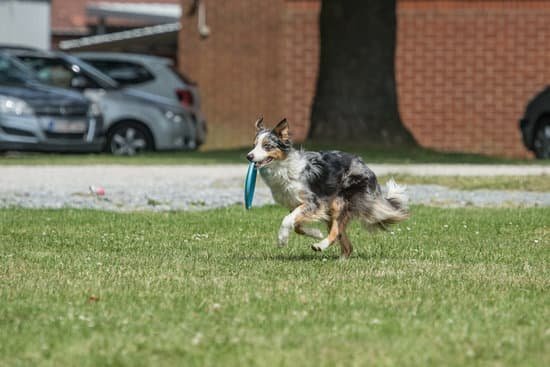A stud dog plays a vital role in breeding programs, ensuring the continuation of specific traits and characteristics. However, the success of a stud dog’s mating and behavior heavily relies on effective training. This article aims to provide a comprehensive guide on how to train a stud dog, addressing the unique challenges faced in this process.
Understanding the importance of training is key to achieving successful outcomes when breeding with a stud dog. Training not only ensures proper behavior and manners but also creates a strong foundation for successful mating experiences. Additionally, training plays a crucial role in managing behavioral issues that may arise due to the inherent nature and instincts of stud dogs.
Training stud dogs comes with its own set of challenges that require careful handling and specialized techniques. The unique qualities and behaviors exhibited by these dogs necessitate tailored training approaches and an understanding of their specific needs. This article will delve into these challenges and offer insights into how to navigate them effectively.
By exploring various aspects of training, evaluating stud dogs, establishing foundational skills, enhancing breeding abilities, addressing behavioral challenges, maintaining reproductive health, and optimizing mating procedures, this article aims to serve as an all-encompassing resource for individuals seeking guidance on how to train their stud dogs effectively.
Selecting the Right Stud Dog
Choosing the right stud dog is a crucial step in breeding programs. It involves considering various attributes and conducting a thorough evaluation process to ensure successful mating and the production of desirable offspring. This section will highlight the importance of selecting the right stud dog for breeding purposes, discuss desired attributes and characteristics to consider, and provide insights into the evaluation process.
When selecting a stud dog, it is essential to carefully evaluate its attributes and characteristics. The goal is to choose a dog that possesses desirable traits that complement those of the female dog in terms of physical appearance, temperament, health, and genetic diversity. Some key attributes to consider include:
- Breed Standards: Ensure that the stud dog meets all breed standards in terms of size, coat type, coloration, structure, and other specific breed requirements.
- Health Clearances: Verify that the stud dog has undergone necessary health tests to rule out any genetic conditions or diseases that can be passed on to offspring.
- Temperament: Assess the stud dog’s temperament for compatibility with both humans and other animals. A balanced and well-behaved temperament is ideal for successful matings.
- Proven Offspring: Consider whether the stud dog has already produced high-quality offspring with desirable traits as evidence of its genetic potential.
To undertake an effective evaluation process for selecting a stud dog, breeders often rely on structured assessments such as conformation shows, performance evaluations (such as agility or obedience trials), health clearances from specialized veterinary organizations, pedigree analysis, and consultation with experienced breed mentors or professionals.
By carefully selecting a stud dog based on desired attributes and conducting a thorough evaluation process, breeders can increase their chances of producing healthy offspring with desirable traits. Investing time in this stage ensures that breeding programs maintain quality standards while contributing positively to overall genetic diversity within specific breeds.
| Attributes | Description |
|---|---|
| Breed Standards | Ensure that the stud dog meets all breed standards in terms of size, coat type, coloration, structure, and other specific breed requirements. |
| Health Clearances | Verify that the stud dog has undergone necessary health tests to rule out any genetic conditions or diseases that can be passed on to offspring. |
| Temperament | Assess the stud dog’s temperament for compatibility with both humans and other animals. A balanced and well-behaved temperament is ideal for successful matings. |
Establishing a Strong Foundation
The Importance of Early Socialization
Establishing a strong foundation for training a stud dog begins with early socialization. This crucial step helps shape the dog’s behavior and temperament, ensuring they become well-rounded and comfortable in various environments. Early socialization also plays a vital role in reducing the risk of fear or aggression towards people, animals, and different situations.
To successfully socialize a stud dog, it is important to expose them to a wide range of experiences in a positive and controlled manner. Introduce the dog to different types of people, including men, women, children, and individuals wearing various attire such as hats or uniforms. It is also beneficial to familiarize the dog with other animals, such as cats or small mammals, while closely supervising their interactions.
Tips for Early Socialization
When socializing a stud dog, it is essential to provide positive reinforcement and reward-based training methods. This can involve treats, praise, and playtime whenever the dog exhibits desired behaviors. Additionally, consider the following tips for effective early socialization:
- Gradual Exposure: Introduce new experiences gradually while monitoring the dog’s comfort level. Slowly increase the intensity of stimuli as they become more at ease.
- Controlled Environments: Begin socialization in calm environments before gradually progressing to busier places with more distractions.
- Desensitization Techniques: Expose the stud dog to potential triggers they may encounter during their breeding career. For example, desensitize them to handling by replicating gentle restraining techniques that may be necessary during mating procedures.
- Puppy Kindergarten/Training Classes: Enroll your stud dog in puppy kindergarten or basic obedience classes where they can interact with other dogs in a supervised setting.
Basic Obedience Training for Stud Dogs
In addition to early socialization, basic obedience training forms another crucial aspect of establishing a strong foundation for stud dogs. Basic commands such as sit, down, stay, and come are essential not only for managing the dog’s behavior but also to ensure their safety during mating procedures.
It is beneficial to use positive reinforcement techniques like treats, praise, or play to motivate stud dogs during obedience training. Regular short training sessions spread throughout the day can help prevent mental fatigue and maintain the dog’s focus. Consistency and patience are key when training stud dogs, as each dog may progress at their own pace.
Stud dogs should also be leash trained to ensure they can walk calmly on a leash without excessive pulling or tugging. Teaching loose leash walking allows handlers to maintain control over the dog’s movements during breeding encounters or in public settings.
By establishing a strong foundation through early socialization and basic obedience training, stud dogs can develop the necessary skills and behaviors for successful reproductive careers.
Developing Core Breeding Skills
Breeding is a crucial aspect of a stud dog’s role, and it requires the development of specific skills to ensure successful mating and reproduction. In this section, we will explore the essential training required to develop the core breeding skills of teasing, mounting, and nurturing natural behaviors in stud dogs.
Teaching Proper Teasing Techniques
Before a successful mating can occur, it is important to teach the stud dog proper teasing techniques. Teasing is used to stimulate the dog’s sexual instincts and ensure that he is ready for mating. To begin teaching teasing, start with a toy or an object that mimics the female dog’s scent. Allow the dog to play with it while closely observing his behavior.
During this process, it is essential to reinforce proper behavior and discourage any undesirable actions. If your stud dog becomes too excited or displays inappropriate behavior during teasing, redirect his attention by giving him a command like “sit” or “stay.” With consistent training and reinforcement, your stud dog will learn to control his excitement levels during the teasing phase.
Training for Mounting Behavior
Mounting behavior is another fundamental skill that stud dogs need to learn for successful mating. It is important for them to understand when and how they should mount the female partner. Start by using a sturdy support or dummy stand-in during training sessions. This allows the stud dog to practice proper positioning while reducing any potential discomfort for both dogs.
Begin by encouraging your stud dog to mount the support object on command or in response to visual cues such as holding up a specific item or using a distinct signal word. Gradually transition from using stationary objects to live females under controlled circumstances. Be patient throughout this process as it may take time for your stud dog to fully grasp these behaviors.
Nurturing Natural Behaviors
Natural behaviors play a vital role in successful breeding. Stud dogs need to exhibit natural instincts such as showing interest in the female dog, scent marking, and indicating receptiveness through body language. While some of these behaviors come naturally, others may require additional training and reinforcement.
To nurture these natural behaviors, expose your stud dog to the sights, sounds, and scents associated with breeding. This can be done by taking him to dog shows, socializing him with other dogs, allowing supervised interactions with females in heat (if appropriate), and introducing him to different environments. Positive reinforcement techniques should be used to reward desired behaviors and redirect or discourage unwanted actions.
By developing core breeding skills through teasing training, teaching mounting behavior, and nurturing natural instincts, you are setting your stud dog up for success in his role as a breeding partner. Consistency, patience, and positive reinforcement will help shape your stud dog into a reliable performer when it comes to mating.
Advanced Training Techniques
In order to develop a well-rounded and successful stud dog, it is important to move beyond basic obedience training and introduce advanced commands that are specifically relevant to their role. These advanced obedience commands not only enhance the dog’s overall training but also contribute to their effectiveness as a stud dog.
Additionally, conditioning exercises play a crucial role in improving stamina, strength, and overall fitness, which are essential for successful mating. This section will explore advanced obedience commands and conditioning techniques that can be used to further train and prepare a stud dog for its breeding responsibilities.
One of the advanced obedience commands that should be introduced to a stud dog is the “wait” command. This command teaches the dog self-control and patience during mating procedures. By teaching the dog to wait on command, breeders can ensure that the dog remains calm and composed, reducing any potential risks during the mating process.
Similarly, the “release” command is also crucial for a stud dog. This command allows breeders to safely separate the stud dog from the female after mating is complete.
In addition to advanced obedience commands, conditioning exercises are vital for maintaining optimal physical fitness in stud dogs. A balanced combination of cardiovascular exercise, strength training, and endurance-building activities should be incorporated into their routine. Regular exercise not only improves stamina but also enhances muscle tone and mental focus. Incorporating toys or games during exercise sessions can help stimulate their minds while keeping them physically active.
To track your stud dog’s progress in terms of physical fitness, stamina, and overall health, it may be helpful to keep a record of their exercise routines, including distance covered during walks or jogs, time spent playing fetch or engaging in other forms of physical activity, as well as any noticeable changes in behavior or performance.
Implementing these advanced training techniques along with adequate conditioning exercises will not only improve your stud dog’s overall performance but also contribute to their long-term well-being. It is important to remember that each dog is unique, so tailor the training and conditioning programs based on the individual needs and capabilities of your stud dog.
By investing time and effort into advanced training techniques and conditioning exercises, breeders can ensure that their stud dogs are fully prepared for successful mating procedures.
| Command | Description |
|---|---|
| Wait | This command teaches the dog self-control and patience during mating procedures. |
| Release | This command allows breeders to safely separate the stud dog from the female after mating is complete. |
Managing Behavioral Challenges
Training a stud dog comes with its unique set of challenges, especially when it comes to managing behavioral issues such as aggression, anxiety, and dominance. Understanding and effectively addressing these challenges are crucial for the overall well-being and success of both the dog and the breeding program. In this section, we will discuss common behavioral challenges that stud dogs may exhibit and provide strategies for managing these issues.
One common behavioral challenge in stud dogs is aggression. Whether it’s aggression towards other dogs or humans, it is essential to address this issue promptly and appropriately. A reputable dog trainer or behaviorist should be consulted to create a behavior modification plan specific to the dog’s needs.
This plan may include desensitization techniques, counterconditioning exercises, and positive reinforcement training methods. It is important to remain calm and patient throughout the training process while ensuring the safety of all involved.
Anxiety is another challenge that some stud dogs may experience. It can manifest in various ways, such as excessive barking, destructive behavior, or withdrawal from social interactions. To help alleviate anxiety in a stud dog, it is crucial to provide them with a safe and secure environment while gradually exposing them to new situations and experiences through controlled socialization. Additionally, incorporating mental stimulation activities such as puzzle toys or scent games can help redirect their focus and reduce anxiety levels.
Dominance issues can also arise in stud dogs due to their innate instinct to establish hierarchy within a pack. While assertiveness can be beneficial for breeding purposes, excessive dominance can lead to problematic behaviors such as resource guarding or territorial aggression.
Consistent obedience training sessions focused on reinforcing proper boundaries and establishing leadership will help manage dominance issues effectively. Providing clear rules and consistent routines will give the dog structure and guidance while fostering respect between the handler and the stud dog.
Addressing these behavioral challenges requires patience, consistency, and understanding of each individual dog’s needs. Owners and handlers should always prioritize the welfare of the dog and seek professional help if necessary. By properly managing aggression, anxiety, and dominance issues, stud dogs can perform their role effectively in breeding programs and lead balanced lives overall.
Maintaining Healthy Reproductive Health
To ensure the successful breeding and overall well-being of a stud dog, it is crucial to maintain their reproductive health. This section will focus on the importance of nutrition, exercise, and regular veterinary check-ups in supporting optimal reproductive health.
Nutrition plays a vital role in a stud dog’s reproductive health. It is important to provide a well-balanced diet that meets their specific nutritional needs. A diet rich in high-quality protein, vitamins, and minerals will contribute to healthy sperm production and motility.
Additionally, incorporating omega-3 fatty acids into their diet can help promote fertility and support good overall reproductive function. Consult with a veterinarian or canine nutritionist for guidance on the most appropriate diet for your stud dog’s individual needs.
Regular exercise is essential for maintaining the reproductive health of a stud dog. Exercise helps to regulate hormone levels, promotes blood circulation throughout the body, and aids in maintaining an ideal body weight. However, it is important to strike a balance as excessive exercise can lead to fatigue and decreased sperm quality.
Engage in activities such as brisk walks or play sessions that are suitable for your dog’s breed and age. Always monitor their energy levels during exercise and consult with a veterinarian if you have any concerns.
In addition to proper nutrition and exercise, regular veterinary check-ups are vital for monitoring your stud dog’s reproductive health. A veterinarian can perform thorough examinations to ensure there are no underlying issues that may affect breeding performance or overall well-being.
They can also provide guidance on preventive measures such as vaccinations and parasite control methods that will contribute to optimal reproductive health. Establishing a good relationship with a trusted veterinarian experienced in canine reproduction will prove invaluable throughout your stud dog’s training journey.
By prioritizing nutrition, exercise, and regular vet check-ups, you can help maintain the reproductive health of your stud dog. These practices will not only support successful breeding but also contribute to their overall well-being. Remember, each stud dog is unique, and it is important to consult with professionals who can provide personalized guidance based on your dog’s specific needs.
Tips for Successful Mating and Handling
During the process of breeding, successful mating is crucial to ensure the continuation of desirable traits and characteristics in a particular breed. In this section, we will discuss some essential tips and techniques for achieving successful mating and handling of stud dogs.
Proper timing is crucial when it comes to successful mating. Understanding the female dog’s reproductive cycle and knowing when she is in heat is key. This information can be obtained through various methods such as observing behavioral changes, monitoring their vaginal discharge, or consulting with a veterinarian. It is important to introduce the male dog only when the female is in her fertile period to maximize the chances of successful mating.
Handling during mating plays a significant role in ensuring both dogs are comfortable and safe throughout the process. Care should be taken to facilitate a controlled and controlled introduction between the male and female dogs. Both dogs should be properly leashed or held by experienced handlers who can guide them through the process smoothly. Creating a relaxed environment by choosing a quiet and familiar location can also help reduce stress levels.
Another important aspect of successful mating is understanding the natural behaviors and instincts of stud dogs during this process. Male dogs naturally exhibit mounting behavior, but it may still need training to ensure proper positioning and duration during mating. Patience and consistency are key when teaching these behaviors to stud dogs.
Lastly, it is essential to monitor both dogs after mating to prevent injuries or any complications that may occur post-mating. Some male dogs may display protective or possessive behavior towards the female after mating, so it is advisable to separate them while monitoring their well-being closely.
By following these tips and techniques for successful mating and handling, you can increase the likelihood of achieving successful breeding with your stud dog. Remember that patience, proper timing, careful handling, understanding natural behaviors, and post-mating monitoring are all vital components in ensuring a smooth breeding process for your stud dog.
Conclusion
In conclusion, training a stud dog is essential for ensuring successful matings and proper behavior. The role of a stud dog in breeding programs cannot be overstated, as they play a crucial role in passing on desirable traits to future generations. By following the roadmap outlined in this article, you can train your own stud dog effectively and set them up for success.
Throughout this article, we have discussed the importance of selecting the right stud dog and evaluating their attributes and characteristics. Additionally, we have highlighted the significance of early socialization and basic obedience training to establish a strong foundation. Developing core breeding skills, such as teasing and mounting behaviors, is also crucial for a stud dog’s training.
Advanced obedience commands and conditioning exercises were discussed to enhance the stud dog’s stamina, strength, and overall fitness. Furthermore, we addressed common behavioral challenges that may arise with stud dogs, such as aggression, anxiety, and dominance issues. Effective strategies were provided to manage these behaviors and maintain a harmonious environment.
It is important to remember that maintaining reproductive health through proper nutrition, exercise, and regular vet check-ups is vital for a successful stud dog. Finally, we offered tips and best practices for handling mating procedures to ensure the comfort, safety, and well-being of both the stud dog and the female.
By implementing the techniques outlined in this roadmap and seeking professional advice if needed, you can train your own successful stud dog. Remember that training takes time, patience, consistency, and positive reinforcement. With dedication and commitment to their training journey, you can shape your stud dog into an invaluable asset in any breeding program.
So start today. Train your stud dog with confidence knowing that you are laying the foundation for their success in fulfilling their important role as a sire.
Frequently Asked Questions
How do you stud a dog for beginners?
Studying a dog for beginners involves understanding the necessary steps and considerations involved in breeding your male dog with a female dog for the purpose of producing puppies. As a beginner, it is essential to first educate yourself about dog breeding and seek guidance from experienced breeders or veterinarians. Research different breeds and learn about their characteristics, health issues, and genetic considerations to make informed decisions when choosing suitable mates for your dog.
It is crucial to ensure that both the male and female dogs have undergone necessary health screenings and tests to prevent passing on any inherited diseases or conditions. Understanding the mating process, determining optimal timing for breeding, and providing appropriate care during pregnancy are all important aspects of successfully studding a dog for beginners.
How do you stud out your male dog?
Studding out a male dog refers to the process of allowing him to mate with a selected female in order to produce offspring. Before studding out your male dog, it is essential to evaluate his overall health, temperament, and adherence to breed standards. He should undergo proper health screenings to rule out any potential genetic disorders or diseases that could be passed on to the puppies.
Additionally, consult with experienced breeders or professionals familiar with your specific breed for advice on selecting an appropriate mate who complements your male’s qualities while minimizing potential health risks. It’s important to establish clear agreements and contracts with the owner of the female regarding responsibilities, financial arrangements, and liabilities associated with breeding.
What age should you stud a male dog?
The age at which you should stud a male dog depends on various factors including his breed, overall health condition, physical maturity, and behavioral readiness. Generally speaking, most experts recommend waiting until a male dog reaches sexual maturity before considering studding him out—that typically falls between 12 months to 24 months of age.
However, this can vary based on breed-specific recommendations or individual assessments by veterinarians or reputable breeders who are knowledgeable about your specific breed’s development timeline. Waiting until sexual maturity ensures that your dog is physically ready to mate and has fully developed both physically and mentally, reducing the risk of complications or issues regarding fertility, health, or behavior during the breeding process.

Welcome to the blog! I am a professional dog trainer and have been working with dogs for many years. In this blog, I will be discussing various topics related to dog training, including tips, tricks, and advice. I hope you find this information helpful and informative. Thanks for reading!





